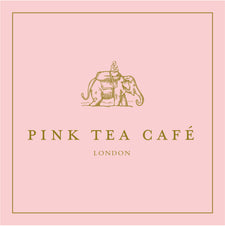What is Chai Tea?

Chai – the word for Tea in India & Pakistan. And so the term 'Chai Tea' is literally 'Tea tea'! Today the influence of chai can be seen in many hot beverages, from chai lattes' to 'dirty chai' and a multitude of chai blends. This article sheds light on the beginnings of traditional chai, which we see as an expression of the flavours and cultures in tea concocted in British India. People began to enjoy tea brewed with milk and spices such as cardamom and Cinnamon, and this enjoyment evolved to become an everyday necessity.
The word "chai" is derived from the Chinese word "cha", which translates to "tea", and the journey to chai began in China.
"The effect of tea is cooling, and it is most suitable as a beverage. It especially fits for persons of self-restraint and inner worth."
- Lu Yu (715-803), Ch'a Ching
China was a tea-drinking nation for thousands of years. Early accounts show tea-drinking dating back to the Tang dynasty in China around 618-906 AD. Tea became a ritual woven into the fabric of society, so highly revered that it even caught the attention of writer Lu Yu who wrote an entire book on the beverage called Ch'a Ching. For Lu Yu, Tea symbolized the harmony and mysterious unity of the Universe. "He invested the Ch'a Ching with the concept that dominated the religious thought of his age, whether Buddhist, Taoist, or Confucian: to see in the particular an expression of the universal" (Shapira et al., 150).

Centuries later, Portuguese and Dutch traders began importing Tea to Europe, with regular shipments by 1610. The drink was slowly introduced into Europe as a medicinal beverage with therapeutic properties and was consumed only by the upper classes who could afford this heavily taxed herb! Tea was soon elevated beyond its medicinal status and became a social beverage thanks to Princess Catherine of Braganza, England's Portuguese future queen consort. She set the trend amongst aristocratic women.
At the time of British rule in India, the East India Company saw an opportunity to break the Chinese monopoly on tea. Taking a sample of tea seeds from China to India in 1774, they began experimental planting in Calcutta. Following numerous failed attempts at growing the Chinese variety, later in 1823, a native type of Camellia Sinensis plant was discovered by Scotsman Robert Bruce in Assam. The first British-led commercial tea plantation in India was established in Assam, and in 1839, the first retail sale of Tea in London took place.
This historical moment changed the source of tea, and by 1890 India was supplying 90% of Britain's domestic market. To increase consumption amongst Indians, the Indian Tea Association was established, and by 1901 they began actively promoting tea drinking amongst locals placing mandatory tea breaks in factories, railways, mines, mills and even fields. Of course, Indian culinary was not complete without the addition of masala, and so cardamom, cloves and Cinnamon began brewing together with milk, sugar and tea. Chai was born. This unforgettable delight became a social symbol of hospitality, and very soon, tea stalls flooded every street corner. Chai has enlivened tastes across borders thousands of miles from its origin and years beyond its inception. Pink Tea Café celebrates the journey of chai through time, and in 2021 we will inaugurate the chai culture of South Asia in London with our physical café!

Leave a comment